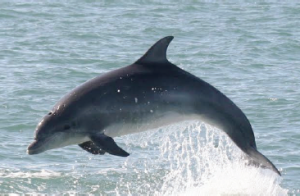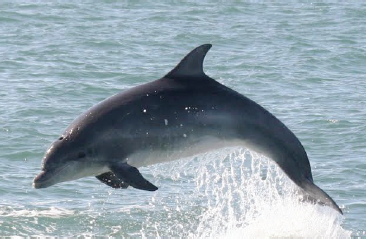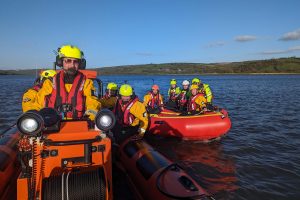
SCIENTISTS from the Wildlife Trust of south and west Wales’ Cardigan Bay Marine Wildlife Centre, New Quay have shown that Welsh bottlenose dolphins produce high frequency signature whistles, the highest frequency recorded for the species so far.
Bottlenose dolphins live in an aquatic environment with few physical landmarks and often poor visibility, as a result sound is very important to them.
Bottlenose dolphins are well known for their use of individually distinctive identity signals, known as signature whistles, which they use to broadcast their identity and to maintain contact with one another.
A team of researchers studying the bottlenose dolphins in Cardigan Bay, have found evidence of geographic variation in signature whistle structure, with some Welsh bottlenose dolphins whistling at higher frequencies than those found in other populations.
“We found that at least one dolphin whose signature whistle was produced at higher than expected frequencies (>30kHz), a frequency band that is outside of human hearing” says Helen Hiley, the lead author of the paper who conducted the study as part of her honours degree at St Andrews University in collaboration with researchers at Cardigan Bay Marine Wildlife Centre and the University of Western Australia.
“The use of this higher frequency for bottlenose dolphin whistle communication has not been documented elsewhere for this species, it was previously believed bottlenose dolphins did not exploit the 30-40kHz frequency band” says Hiley.
This study brings the total number of wild bottlenose dolphin populations, where signature whistles have been identified, up to six.
“The findings of this study have significant implications for the management and conservation of regional populations of dolphins, such as Cardigan Bay population.
“The reasons for the use of these higher frequencies for whistle communication are unknown and further research is required to determine the extent of the use of these ultrasonic whistles” says Sarah Perry, the Wildlife Trust of South and West Wales’ Living Seas Science Officer,
















Add Comment